Introduction:
Bangladesh is a peace-loving and friendly country. Bangladesh establishes diplomatic relations with foreigners with the slogan ‘friendship with all and enmity with none’. India is a neighboring country of Bangladesh. At the time of independence, India extended a helping hand to Bangladesh in various ways. However, after the independence of Bangladesh, various problems arose between India and Bangladesh.
As a result, relations between Bangladesh and India became hostile. But India has no interest in resolving bilateral issues. As a result, the issue of common water distribution between Bangladesh and India is being prolonged. Bangladesh submitted its claim to the International Arbitration Tribunal on 31st ‘Memorial’ of 2011. It is hoped that Bangladesh will get proper justice in his favor. This can solve the problem of water distribution in the sea area.
Common rivers between Bangladesh and India:
The rivers are closely related to Bangladesh and India. The rivers of international standard flowing through Bangladesh are related to the rivers of India. According to the information provided by the Joint Rivers Commission, the number of rivers in common between Bangladesh and India is 54. According to Bangla Pedia, the number of rivers in India and Bangladesh is 55.
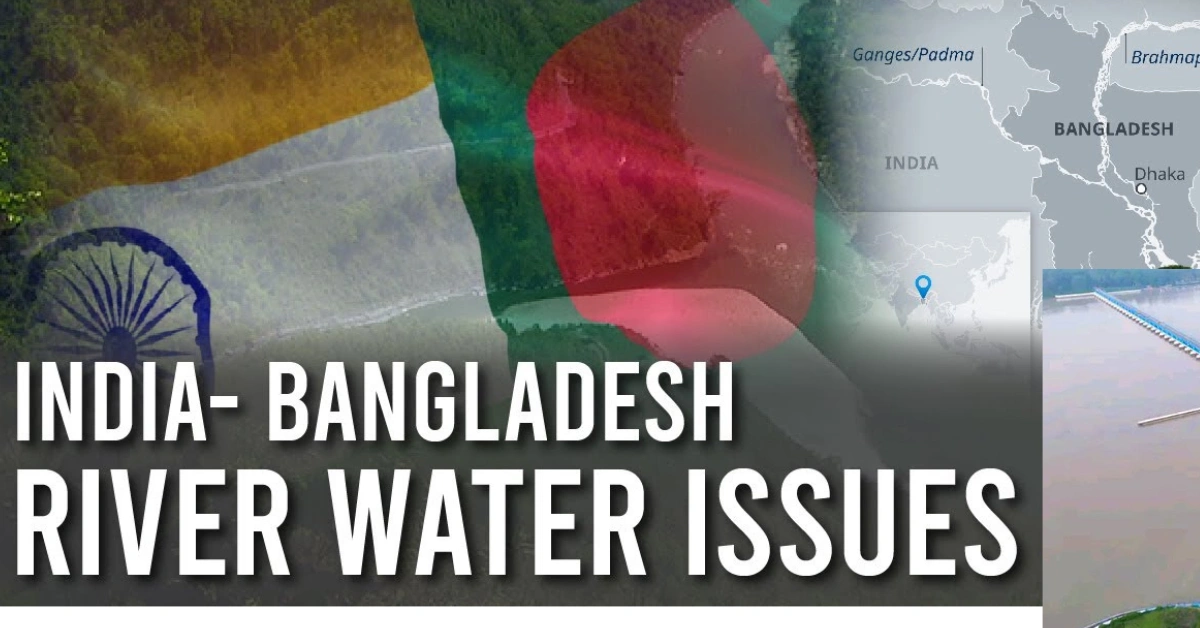
All these rivers flow through different districts of Bangladesh. Among them, 6 rivers in Sylhet, 4 each in Panchagarh, Sunamganj and Moulvibazar, 3 each in Nilphamari, Kurigram, Habiganj and Brahmanbaria, 3 each in Satkhira, Nawabganj, Meherpur, Dinajpur, Nawabganj, Naogaon, Sherpur, Comilla, 2 each in Feni, Jessore, Lalmonirhat, Netrakona. And Rangamati has 1 river each.
Water Distribution Problems:
Bangladesh is a motherland of rivers. There are many unknown rivers in this country. Bangladesh’s international-quality rivers are closely related to India’s rivers. The major rivers of Bangladesh enter Bangladesh through India. Compared to India, Bangladesh is a smaller country and less powerful in terms of power. And on this occasion, the Indian government is stopping the flow of international rivers coming through India only for their benefit. As a result, the flow of many small and big rivers in Bangladesh has stopped.
Uniform river water distribution problem:
Bangladesh and India have a long history of water-sharing problems. Most of the 57 rivers flowing through Bangladesh flow between India and Bangladesh. Bangladesh is somehow dependent on India in terms of rivers, India can influence the flow of various rivers if it wants. The Joint Rivers Commission was formed in 1972 to solve this problem.
But in 1974, when the Farakka Barrage was opened, the level of water flow in Bangladesh was adversely affected. As a result, since the source of the reservoir is Nepal, Bangladesh later proposed a joint river commission with India including Nepal, but it was not implemented. In 1975, a short-term water-sharing agreement was signed between the two countries. But day by day the crisis of water problem is intensifying.

Although there is a lot of discussion between the two countries, Bangladesh has benefited from it very little. A 30-year water-sharing agreement was signed between the Prime Ministers of the two countries in Delhi on December 12, 1996, for a permanent solution to the water problem.
But in the last 7 years, Bangladesh has not understood the fair account of water according to the agreement. June 2004 When a new government was formed under the leadership of the Congress in India, Priranjan Das Munshi, a Bengali Congress leader of West Bengal, was given the responsibility of the Ministry of Water Resources.
After taking responsibility Mr. Munshi assured to solve Bangladesh’s water problem. After that, until 2005, there was a discussion between the two parties on the issue of fair distribution of water from different rivers at the secretary level, but the problem was not resolved. A water-sharing agreement between Bangladesh and India is currently being negotiated with the Government of West Bengal and the Central Government.
Inter-River Linkage Project of India:
To meet the growing water demand of the next 50 years, India’s master plan is to supply water to the northern and northwestern regions of India by withdrawing water from all the rivers of the Ganga-Brahmaputra and its basins through dams, reservoirs, and connecting canals is known as the Inter-River Interconnection Project.
As per the plan, the excess water stored during the rainy season will be supplied for agriculture and other purposes in different places during the dry season. On the one hand, Indian officials think that floods will be prevented, and the danger of drought will also be removed.

Bangladesh as a downstream country is dependent on upstream rivers. Moreover, if India implements this project, if the natural flow of all the rivers entering Bangladesh from India is blocked, the water in the rivers of Bangladesh will decrease and the environment will be severely affected. If the water in the river decreases, the groundwater level will further decrease. In that case, the arsenic problem will increase.
Besides, if the water in the river decreases, the production of fish will be severely disrupted. There is a danger of desertification of large areas in the north of Bangladesh. Simply put, the implementation of the inter-river project will herald a happy day for India as well as a sad day for Bangladesh.
Bangladesh requested the previous Indian government not to implement the project. However, the NDA coalition government did not heed the request. The current ruling Congress coalition government has assured Bangladesh that it will not do anything harmful to Bangladesh.
Tipaimukh Dam:
Bilateral conflict has recently arisen over the Tipaimukh Dam. Although Tipaimukh Dam is a death trap for Bangladesh, no strong objection has been raised so far by the Bangladesh government. As a result of Tipaimukh Dam-
1. India’s multifaceted water resources management scheme will be developed. It will produce large quantities of water and supply it to Assam, Tripura, Manipur, and Mizoram in India. As a result, an artificial lake will be created which will produce thousands of tons of fish. During the dry season, India will be able to expand irrigation facilities in Tripura, Mizoram, and Manipur to control monsoon floods through dams.
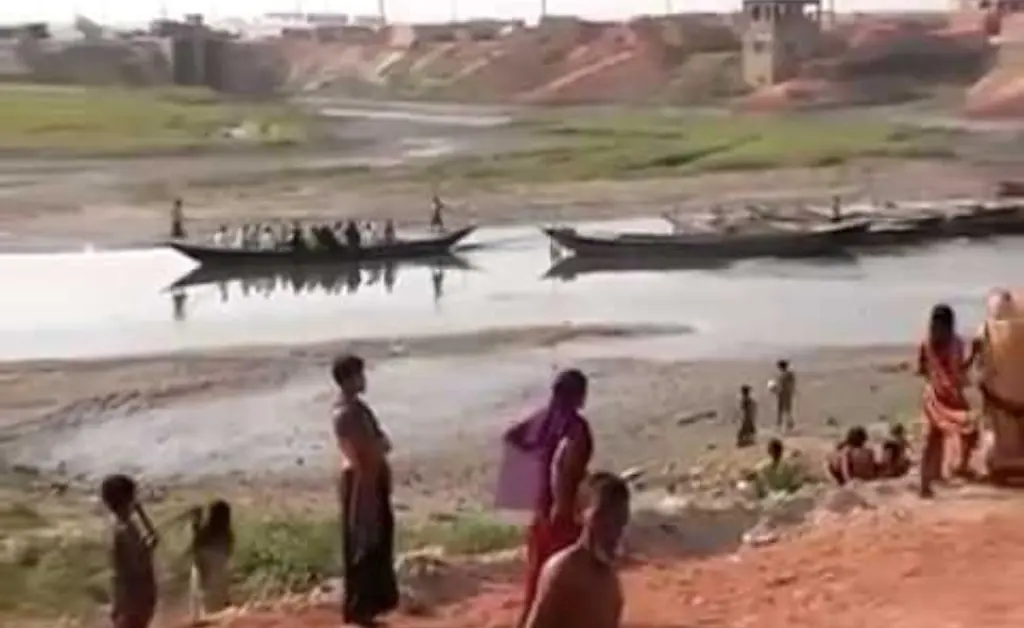
2. In the case of Bangladesh, Tipaimukh Dam is a death trap. If the Barak River is dammed, the surrounding areas of Surma, Kushiara, and Meghna will face severe environmental disasters. According to experts, this dam will cause more severe environmental damage than the Farakka Dam. If the dam is built, within 10 years the natural disaster in the northeastern part of Bangladesh will be equivalent to a desert, as a result, 12 million people in Sylhet, and 60 million people in Dhaka region will face direct environmental disaster. The whole country will face this aggression gradually.
Teesta Dam Project:
The Teesta dam is more likely to become useless due to lack of water. At the beginning of the dry season, Teesta is now sandy. Due to the lack of water, the water level in the area around Teesta River has gone down a lot. No agreement on Teesta river water sharing between Bangladesh and India has been reached before. Due to the unilateral withdrawal of water from the Ghazal Danga of the Bharat Teesta River, the water shortage in the project has naturally occurred.
Therefore, there is no water in the dry season, but in the rainy season, the dam and the surrounding area are at risk due to heavy water flow. Then it became difficult to move the water even with 44 gates open. After the formation of the Joint River Commission between Bangladesh and India in 1972, discussions on Teesta water sharing began. In a ministerial meeting in 1983, it was decided to reserve Teesta water for 36 parts of Bangladesh, 39 parts of India, and 25 parts of the river.

But the decision did not see the light of day as there was no mention of the amount of Teesta water flow, where it would be shared. The Teesta Dam project, a huge socio-economic potential for India to unilaterally withdraw water upstream of the Teesta River during the dry season, has become useless. Every year, agriculture in the region is disrupted due to a lack of water. Even during the rainy season, if there is not enough rain, there is a shortage of water.
The purpose of this irrigation scheme was to ensure the supply of water throughout the year and make the cultivation of various crops possible. Mainly 3 crops were planned under this dam. But Teesta Dam is now largely ineffective due to India’s water scarcity.
Farakka Barrage:
Farakka is a town in Murshidabad district in the state of West Bengal. In 1974, India built the Farakka Barrage on the Ganga River. The Padma is now almost a dead river as a result of three and a half decades of interference with river flow and withdrawal of water. The way of life in the north and north-western parts of Bangladesh is getting stuck in the weak stream of Farakka. India intended to dam the Ganges and divert the Ganges water to the Bhagirathi and Hooghly rivers.
India through a letter informed Bangladesh that the feeder canal connecting the Bhagirathi Hooghly River with Farakka Barrage should be commissioned and tested. In an agreement between Bangladesh and India, India will withdraw a certain amount of water from the Ganga through the feeder canal for 41 days. Accordingly, India began to withdraw. But it never ended. Thus India launched the Farakka Dam in the name of an experiment.
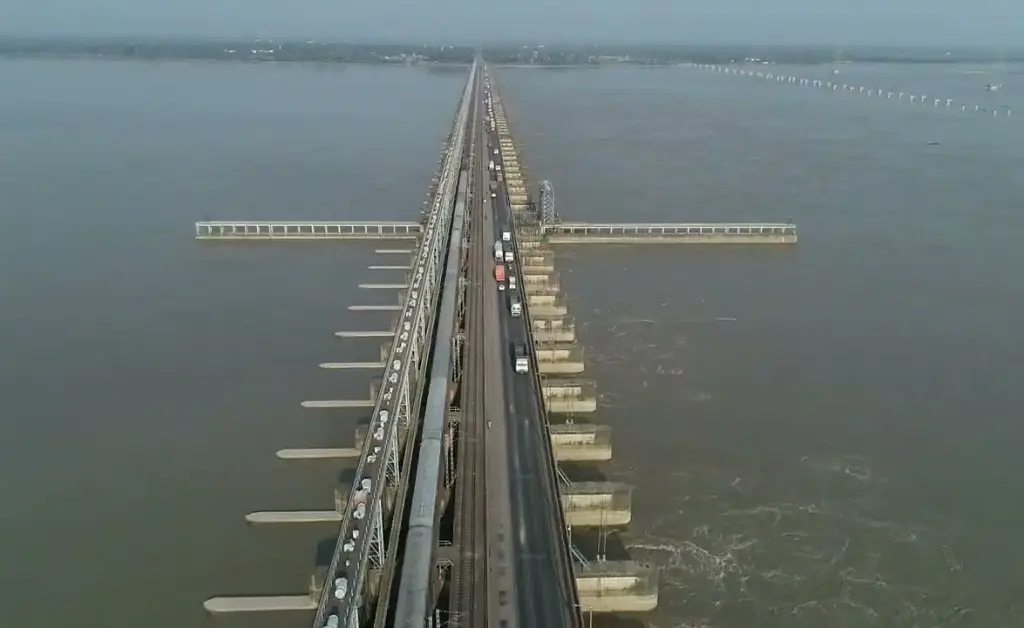
As a result of the Farakka River, India is consuming water unilaterally. On the other hand, Bangladesh is deprived of water. Five rivers in Baliakandi have stopped flowing due to the Farakka water crisis. Pramatta Garai, Chandana, Harai, Chitra and Pushambali rivers have lost their navigability and turned into dunes due to the violent storm of Farakka. A river is now just history.
Since the opening of the Farakka Dam in 1975, these rivers have started dying. There are rivers but no birds. The environment, farmers, and fishermen of this river region have suffered a terrible natural disaster. Although India has kept its port, agriculture, and irrigation power generation systems running by unilaterally withdrawing water, the country’s agriculture, port irrigation, waterways, environment, and livelihood have suffered terrible natural disasters.
Ways to solve the water-sharing problem between Bangladesh and India:
Bangladesh and India have a long history of water-sharing issues. The relationship between the two countries is somewhat strained over the water distribution issue. India-Bangladesh common water sharing problem needs to be solved due to various reasons. Resolving the water-sharing issue is essential for friendly relations between the two countries and for peace in South Asia. Some outlines for solving the water distribution problem are mentioned below:
-
Implementation of International Rivers Law:
It is possible to solve the India-Bangladesh water-sharing problem by following the international river law. India should be the first to implement this law. Because India is building dams on international rivers and monopolizing the use of rivers without complying with international law. India should follow international law to solve this problem.
-
Adherence to the terms of the Ganga Water Sharing Agreement:
The 30-year Ganga Water Sharing Agreement was signed on December 12, 1996. The agreement was implemented in New Delhi with the Prime Minister of Bangladesh Sheikh Hasina and the Prime Minister of India to implement the water distribution problem. The value of the agreement was the sharing of water between the two states.
The agreement stipulates that the Ganga water will be shared between the two countries from January 1 to May 31, with the consent of both parties and that India will try to maintain the flow of the river only at the average level of the last 40 years.
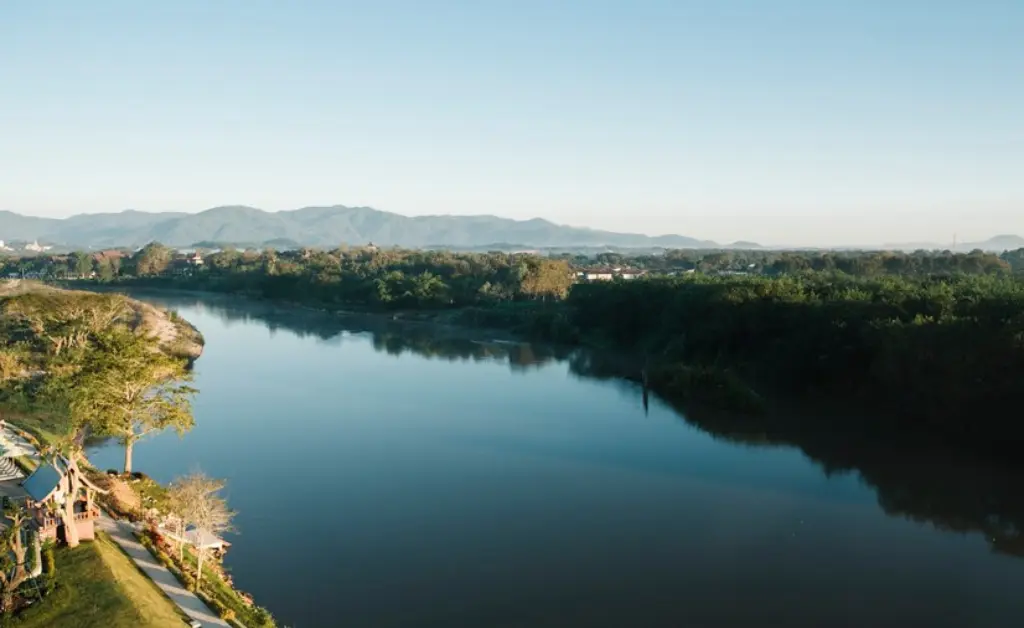
Bangladesh did not get at least 35 thousand cusecs of water. India did not accept this agreement. As a result, the Ganga is being deprived of its fair share of water every year. The water-sharing issue between the two countries can be resolved by following the Ganga Water Sharing Agreement.
-
Emphasis on Diplomatic Activities:
India-Bangladesh common water sharing issue can be resolved through diplomatic efforts. In this case, Bangladesh can highlight the water distribution problem of Bangladesh through diplomatic missions in different countries. Diplomatically, pressure should be created on India to solve the problem through various countries. In particular, the United States, Russia, China, Japan, Britain, and France should highlight the related problems. As a result, they will pressure India to solve the problem. Besides, foreign minister-level bilateral and multilateral meetings can be organized.
-
Economic Diplomacy:
Instead of solving the India-Bangladesh water-sharing issue, India has instead adopted or plans to adopt inter-river connectivity plans. India has sought financial assistance from the World Bank for the implementation of this inter-river link.

At the government level, Bangladesh can present specific information to these institutions and raise reasonable objections and environmental concerns. Bangladesh can take a strong stand against India in this regard and some pressure can be put on India through economic diplomacy.
-
Raised in International Forums:
India-Bangladesh water sharing problem should be brought up to the international community. The international regulations related to the distribution and withdrawal of water from international rivers should be communicated to various organizations of the United Nations. If the water distribution problem is not solved, what problems Bangladesh is likely to face should be known. Also, the disadvantages of Bangladesh can be raised at the SAARC summit.
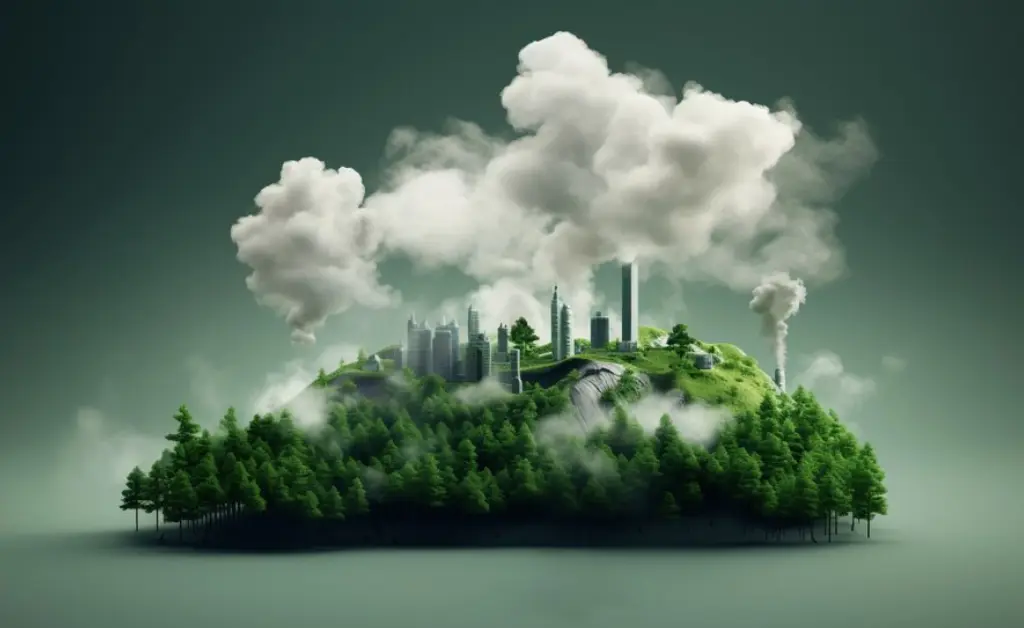
-
Formation of public opinion:
To solve the Bangladesh-India bilateral problem, public opinion must first be formed in Bangladesh. Avoiding political revenge, regardless of party affiliation, everyone should work together for the sake of the country. People from all walks of life should be brought to the same level through various meetings, associations, processions, and seminars and people should be made aware of this.
-
Role of Media:
In today’s world, anything can be communicated to the whole world in a moment through the internet. Websites can be opened on the internet on aspects of water distribution problems in Bangladesh. The water distribution problem of the country can be written in detail and we can bring the opinion of the people of the world towards us. E-mail should be used to exchange ideas, build global opinions, and send e-messages to various individuals and organizations.
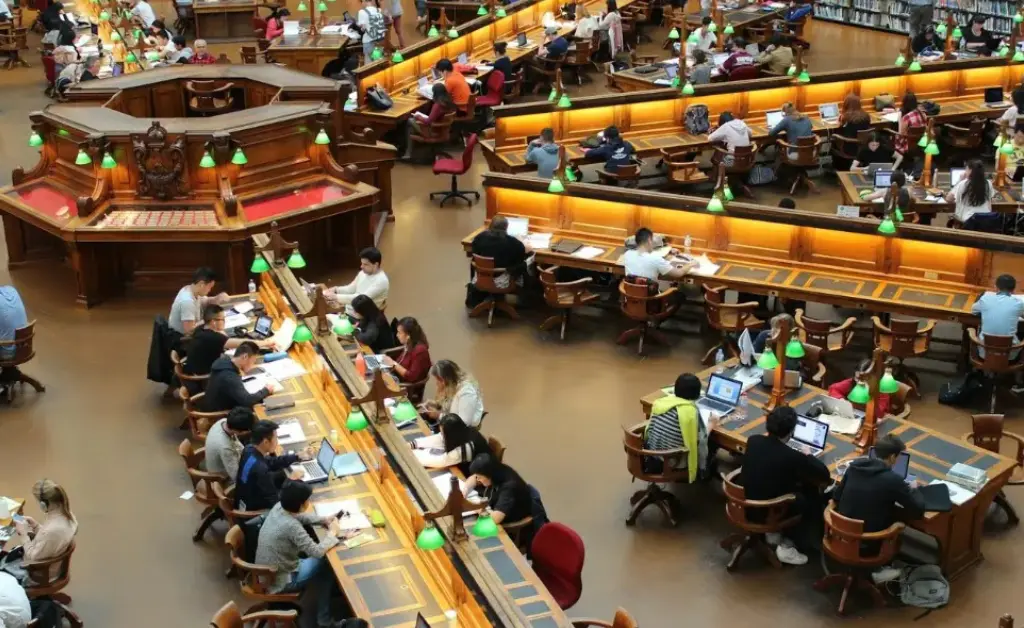
Besides, the issue of water distribution should be widely publicized by mass media. In the light of water distribution problem, different types of publicity campaigns should be increased. We have to highlight the problem to the people of the world through various types of reports, magazines, broadcast TV programs, and writing in newspapers.
-
Role of Government:
In this case, the government has to play the most important role. Because the government can solve bilateral problems. In that case, the government can organize various dialogues and seminars bilaterally and raise issues. Only strong government representations are considered acceptable to the world body. The India-Bangladesh water distribution problem can be solved only if the government does the above tasks itself. The government has already raised its concerns with the Indian ambassador.
-
Environmental Movement:
India-Bangladesh water sharing problem will cause severe damage to Bangladesh’s environment. Therefore, Bangladesh should actively join the environmentalist movement for its benefit. World public opinion must be brought to our side so that India is pressured by environmental activists.
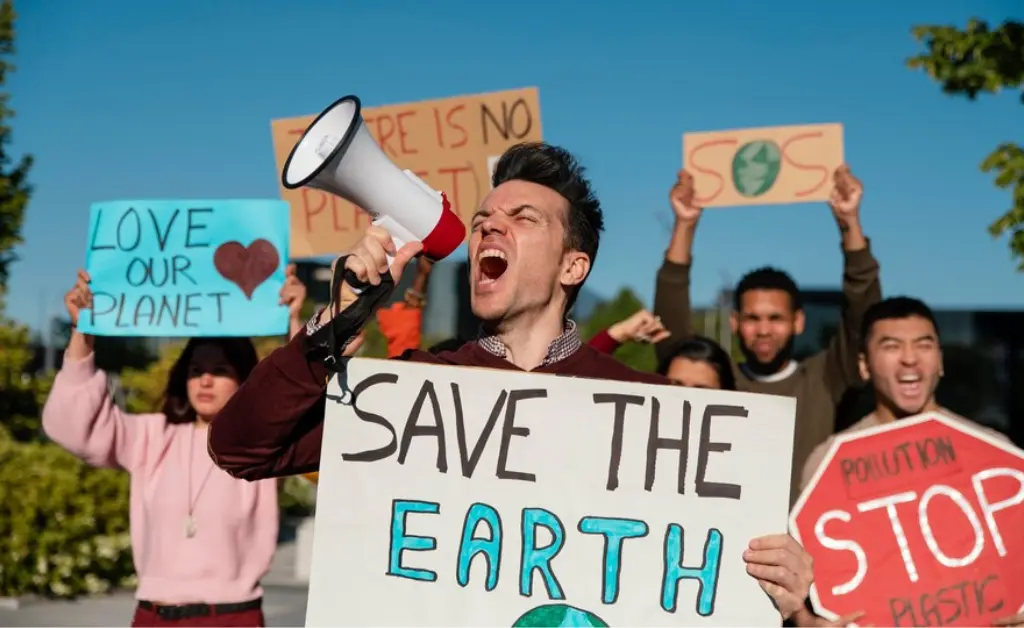
United States-based International Rivers Network, Holland-based International Water Tribunal, etc. organizations work on the normal flow of rivers. So this issue has to be raised very strongly with them. If necessary send messages through e-mail to various individuals and organizations so that they know about our problem.
-
Coalition building and lobbying:
Bangladesh-India water sharing problem will not only affect Bangladesh. India, Nepal, Bhutan, and China are also having problems and disputes over water issues. India, Bangladesh, powerful China, and Nepal can form alliances together and lobby each other on the water-sharing issue of Bhutan.
-
Efforts of expatriates:
Diaspora can play an important role in water distribution issues. Because they can directly communicate with various organizations, we cannot from the country. It is possible to bring foreigners into our favor through the efforts of expatriates. As a result, it is possible to help form public opinion against India in various ways.
Conclusion:
The water-sharing issue is acting as a hindrance to good neighborly relations between India and Bangladesh. India is the nearest major neighbor of Bangladesh. The people of the two countries share ancient historical and cultural ties. Moreover, due to the location in the same geo-natural environment, the two countries have an inseparable connection in matters of mutual interest.
India and Bangladesh, two countries of the third world, have to come forward to protect their interests for the welfare of both countries. A permanent solution to the water-sharing problem can only be achieved through the development of bilateral relations. Therefore, India-Bangladesh should resolve the issue through diplomatic efforts to resolve the bilateral issue in the interest of the country and the welfare of the people.
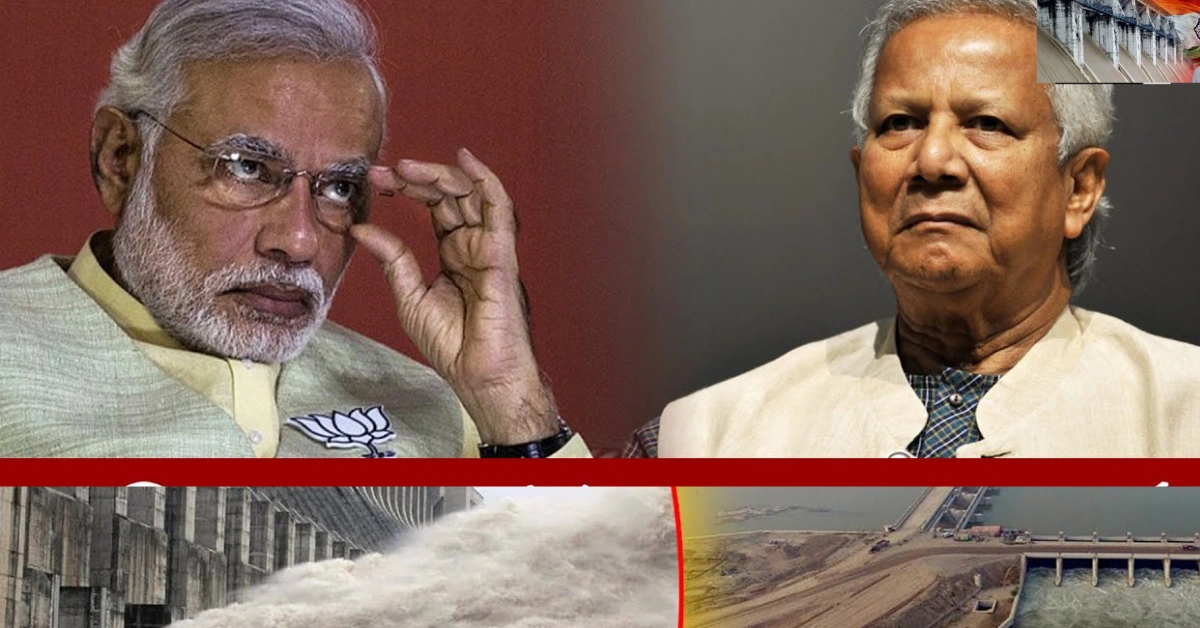
I’m really inspired along with your writing skills and also with the structure on your weblog.
Is this a paid subject or did you modify it yourself?
Either way stay up the excellent quality writing,
it is rare to see a great blog like this one nowadays.